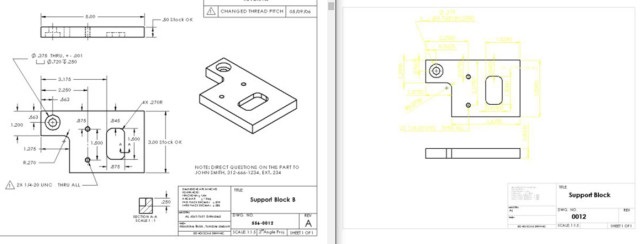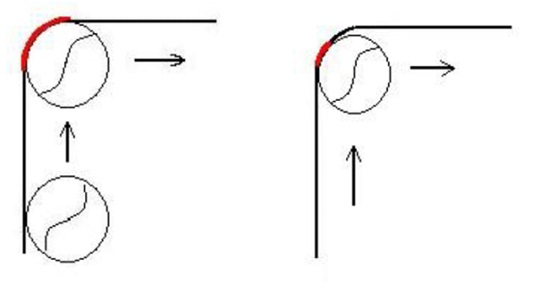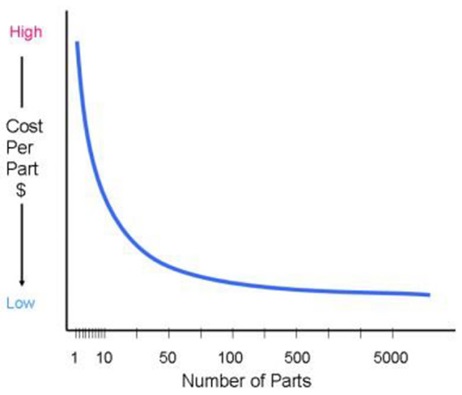13 Tips for Reducing CNC Machining Cost
This article introduce 13 tips to reduce CNC machining cost. Technical drawings are usually the main means of communication between designers and machinery factories.
1. Make sure the text is easy to read, and the lines are deep enough to be clearly visible and avoid printing unclear yellow.

The drawing on the right is difficult to read. Do not provide this print quality to the machining workshop.
2. Give all parts unique names to reduce the possibility of confusion. Make sure to use a complete title block on all engineering drawings, including all revisions, required materials, heat treatment, surface treatment, welding requirements, inspection requirements, etc.
3. Unless absolutely necessary, please avoid using very tight tolerances, because the tolerance is about small, it will make the cost of parts very expensive.
4. If possible, please provide both the 3D model and 2D printing. Make sure the geometry and size of the two-match. Consistency is the key. The 3D model is usually used for machine programming, while the 2D is used as a reference and dimensional inspection throughout the machining process.
5. Need to avoid chattering of the end mill. End mills work best when they are rigid, and the deeper the dimple, the more likely the end mill will tremble. This leads to poor surface finish.
6. Avoid designing parts with the same corner size as the diameter of a typical end mill. Adding .20 or .30 to any corner of the standard diameter will reduce the surface area in contact with the part.

As the corner diameter increases, the surface area of the end mill contacting with the corner of the part decreases. This helps prevent chatter and maintains a good surface finish of the parts.
7. No matter how small the end mill is, any concave angle will remain slightly rounded. If you match the corners of the parts, you can cut off the inner corner of the pocket to avoid affecting the alignment.
8. When machining a cavity near a high wall, tool holder clearance may become a problem. To avoid this problem, specify multiple parts that are designed to be bolted together after processing.
9. For maximum strength, only one hole needs to be tapped, and its depth should be 1-3 times the diameter. Deeper levels are unnecessary and costly. If a through-hole is required, drill through and specify the thread.
10. The most common and cheapest fixture is the vice clamp. This method does require the part to have two parallel sides, which can be clamped with a vise jaw.
11. Use soft jaws to machine more complex parts designed without parallel edges. In this case, the vise jaws are cut into the same shape as the parts to be processed. Soft clamps do require additional processing steps, but they are still quite cost-effective.
12. Try to avoid multiple settings. The most cost-effective parts are those with no features on the sides or back. This is because it is not necessary to reset the machine and re-fix the parts.
13. If possible, increase the order quantity. If only a few parts are processed, a small increase in the number of parts will greatly reduce the unit cost. This is because the cost of setup and programming is dispersed. Ordering similar parts at the same time can also save on reprogramming and fixed costs.

The graph shows a sharp drop in cost per part when increasing the number of parts in the order.


